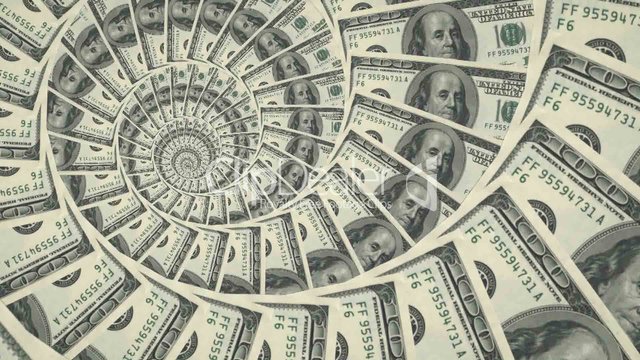Retail Banking Basics Part 1

This is a break down of retail banking in the United States. This guide is meant solely as an entry level understanding of what a retail bank is, how a retail bank functions and what products/services are offered by retail banks.
A retail bank is a bank that services we mortals (consumers). In essence they handle our checking accounts, savings accounts, loans and a bunch of other needed service maintenance. How does this stack up next to other types of banks? Well, commercial banks make loans and handle accounts for larger companies (typically who bring in $1,000K or more). Sometimes commercial banks are intertwined with investment banks, which are large institutions that invest in companies and take risks in the stock market.
Retail bank service most typical, day-to-day needs. The mainstay of the retail bank are called "Checking Accounts," (or Direct Deposit Accounts "DDA's" in banking lingo). These accounts are meant for rapid deposits and withdrawals for paying bills and day-to-day transactions. Other traditionally offered retail products are Savings Accounts (interest bearing accounts limited to 6 withdrawals per month in accordance with U.S. Federal Regulation D), safe deposit boxes on bank property, credit cards and consumer loans.
Retail banks are currently on the decline due to a number of factors including most notably the advent of mobile banking and electronic transactions. Currently a retail bank in the United States is likely to feature a Branch Manager, a Platform Banker, and several Customer Service Reps/Tellers. Though the branch of the future will eventually be fewer in number and much smaller (e.g. a branch manager and banker with an automated cash disbursement machine), retail banks can owe their current saving grace to the baby boomer generation still sharing a preference for face-to-face interactions with bank personnel.
An additional trend is the variation of banking companies housed by a single entity. An example of this would be Wells Fargo --- a larger corporation acts as the parent while there is a retail Wells Fargo bank, an investment broker/dealer investment advisor Wells Fargo Financial Advisors, and Wells Fargo Mortgages.
The good: Retail banks are typically battling to maintain their number of households and to cross-sell the customers they do have with additional products and services. This usually means they strive toward excellent customer service, though this can be disputed at individual branch and regional levels. Retail banks are like gas stations: prices vary on slightly in general, rates are usually comparable, and none of them offer anything that special or unique worth your individual loyalty.
The bad: Most retail banks have outstanding stocks out on the stock market; therefore, their sales and their "numbers" drive the perception of their performance and have a great effect on their access to capital. This means that many retail banks (especially the big guys) squeeze the shit out of their personnell to drive their sales goals. A good example of this is the recent scandal involving Wells Fargo, where thousands of bankers opened bogus accounts and products for unsuspecting customers. Additionally, foot traffic into individual branches is drying up massively --- so many of the customers are getting high pressure sales techniques directed at them by multiple bank employees at all times.
The ugly: Additionally, there was a law passed in the 1930's called Glass-Stegal. This law was passed to make sure that retail banks handling normal consumer deposits didn't gamble that money in the stock market by separating investment banks and retail banks. Yeah, that law was repealed in 1999 under then sitting president Bill Clinton. What does this ultimately mean? We're fucked. As soon as the market tanks and all those consumer deposits which are invested in the market disappear, all of those consumers are essentially up shit creek.
Random Bystander: "But TheJokerNaut, FDIC protects all those consumers." Uh yeah, on a small level. FDIC works when a few banks here and there fail. But when all of those guys fail at once...that Insurance Corporation will be unable to meet all of the demands. In short --- when the big boom lowers, we're all fucked.
But enough of the ugly for now. I'm going to lead into another piece of magic: ready? Great.
Most people think that retail banks take in consumer deposits and loan it out at a higher rate of interest, then credit a fraction of those earnings back into the savings account. Total. Fucking. Bullshit.
What really happens? Well, through the magic of "fractional reserve banking," the retail bank prints money out of thin air. Just kidding, they don't actually print money, they just magically make it appear electronically.
They just make up money that doesn't really exist. That's their business model and they're given a license to do so. Here's how it works in a nutshell: a retail bank is given a "multiplier," or a number that they can multiply their current deposits by to loan out. The multiplier varies depending on economic conditions, market conditions, and the whims of the ["Not So"]Federal Reserve Bank. Rather than try to explain this ridiculous concept through words, please have a look at this Youtube video to familiarize you with fractional reserve banking.
Just so you're aware, I'm only getting started. This shit show has just begun and I'll be adding more to this story as time goes on. I know the first 3 quarters of this article was dry. Believe me, I fucking lived it for a long time. But stay with me and you'll see I'm working to make you free.
As a note this video is not my own work, but is the work of some hard working content provider.
Interesting